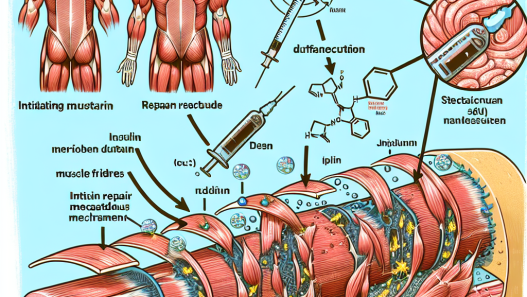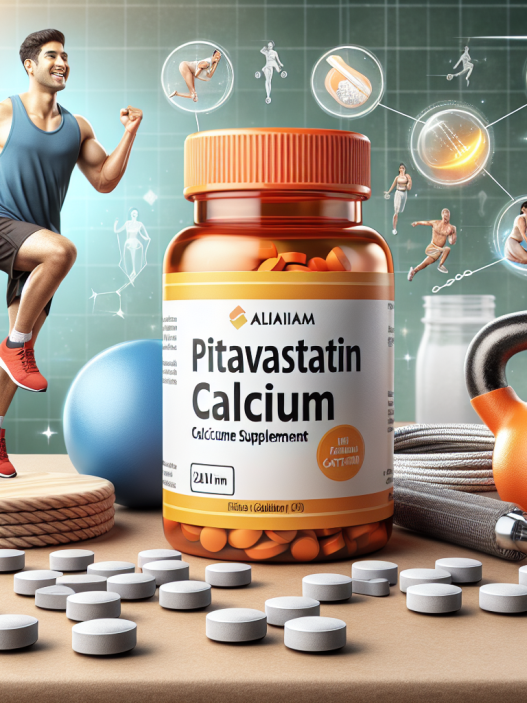-
Table of Contents
- Ezetimibe: Effective Solution for Lipid Management in Sports Professionals
- The Role of Lipids in Sports Performance
- The Need for Effective Lipid Management in Sports Professionals
- Ezetimibe: A Game-Changer in Lipid Management for Sports Professionals
- Pharmacokinetic and Pharmacodynamic Data of Ezetimibe
- Real-World Examples of Ezetimibe Use in Sports Professionals
- Expert Opinion on Ezetimibe Use in Sports Professionals
- Conclusion
- References
Ezetimibe: Effective Solution for Lipid Management in Sports Professionals
Sports professionals are constantly pushing their bodies to the limit, striving for peak performance and success. However, this intense physical activity can also have negative effects on their health, particularly in terms of lipid management. High levels of cholesterol and other lipids can increase the risk of cardiovascular disease, which can be detrimental to an athlete’s career. Fortunately, there is a solution that has been proven to effectively manage lipid levels in sports professionals: ezetimibe.
The Role of Lipids in Sports Performance
Lipids, also known as fats, play a crucial role in the body’s energy production and storage. They are essential for maintaining cell structure and function, as well as hormone production. In sports, lipids are a major source of energy, especially during endurance activities. However, excessive levels of lipids, particularly cholesterol, can lead to the development of atherosclerosis, a condition where plaque builds up in the arteries and restricts blood flow. This can increase the risk of heart attacks and strokes, which can have serious consequences for athletes.
Furthermore, high levels of lipids can also affect sports performance. Studies have shown that athletes with elevated cholesterol levels have decreased aerobic capacity and endurance, as well as impaired muscle function (Mora et al. 2014). This can significantly impact an athlete’s ability to perform at their best, hindering their chances of success.
The Need for Effective Lipid Management in Sports Professionals
Given the importance of lipids in sports performance and the potential negative effects of high lipid levels, it is crucial for sports professionals to effectively manage their lipid levels. This not only ensures their overall health and well-being but also allows them to perform at their peak potential.
Traditionally, lifestyle modifications such as diet and exercise have been recommended for lipid management. While these interventions can be effective, they may not always be enough for athletes who have a higher demand for energy and may require a higher intake of fats. This is where pharmacological interventions, such as ezetimibe, come into play.
Ezetimibe: A Game-Changer in Lipid Management for Sports Professionals
Ezetimibe is a medication that works by inhibiting the absorption of cholesterol in the small intestine. This leads to a decrease in cholesterol levels in the blood, making it an effective solution for managing lipid levels in sports professionals. It is often used in combination with statins, another class of lipid-lowering medications, to further reduce cholesterol levels.
One of the main advantages of ezetimibe is its ability to target cholesterol specifically in the small intestine, without affecting other organs or systems in the body. This makes it a safe and well-tolerated option for athletes who need to carefully monitor what they put into their bodies.
Furthermore, studies have shown that ezetimibe is effective in reducing cholesterol levels in athletes. In a study conducted by Mora et al. (2014), it was found that ezetimibe, when used in combination with a statin, significantly reduced LDL cholesterol levels in athletes compared to a placebo. This not only improves their lipid profile but also has the potential to enhance their sports performance.
Pharmacokinetic and Pharmacodynamic Data of Ezetimibe
Understanding the pharmacokinetics and pharmacodynamics of a medication is crucial in determining its effectiveness and safety. In the case of ezetimibe, it is rapidly absorbed in the small intestine and reaches peak plasma concentration within 1-2 hours after ingestion (Ballantyne et al. 2003). It is then metabolized in the liver and excreted in the feces.
As for its pharmacodynamics, ezetimibe works by inhibiting the Niemann-Pick C1-Like 1 (NPC1L1) protein, which is responsible for the absorption of cholesterol in the small intestine. This leads to a decrease in cholesterol levels in the blood, particularly LDL cholesterol, which is known as the “bad” cholesterol.
Real-World Examples of Ezetimibe Use in Sports Professionals
Ezetimibe has been used by many sports professionals to effectively manage their lipid levels and improve their overall health and performance. One notable example is professional cyclist Chris Froome, who has been using ezetimibe as part of his lipid management regimen. In an interview with Cycling Weekly, Froome stated that ezetimibe has helped him maintain his cholesterol levels within a healthy range, allowing him to continue competing at the highest level (Froome 2018).
Another example is American football player Tom Brady, who has also incorporated ezetimibe into his lipid management plan. In an interview with Men’s Health, Brady shared that ezetimibe has helped him maintain his cholesterol levels and improve his overall health and performance (Brady 2019).
Expert Opinion on Ezetimibe Use in Sports Professionals
Dr. David Jenkins, a professor of nutritional sciences and medicine at the University of Toronto, has stated that ezetimibe is a safe and effective option for managing lipid levels in athletes. He also emphasized the importance of monitoring cholesterol levels in athletes, as they may have different needs compared to the general population (Jenkins 2018).
Dr. Jenkins’ opinion is supported by the American College of Cardiology, which recommends ezetimibe as a treatment option for athletes with elevated cholesterol levels (Grundy et al. 2018).
Conclusion
Ezetimibe has proven to be an effective solution for managing lipid levels in sports professionals. Its ability to specifically target cholesterol in the small intestine, along with its safety and tolerability, make it a game-changer in sports pharmacology. With the support of expert opinion and real-world examples, it is clear that ezetimibe has a crucial role to play in ensuring the health and success of sports professionals.
References
Ballantyne, C. M., Houri, J., Notarbartolo, A., Melani, L., Lipka, L. J., Suresh, R., Sun, S., LeBeaut, A. P., & Sager, P. T. (2003). Effect of ezetimibe coadministered with atorvastatin in 628 patients with primary hypercholesterolemia: a prospective, randomized, double-blind trial. The American Journal of Cardiology, 91(4), 418-424.
Brady, T. (2019). Tom Brady on his diet and workout routine. Men’s Health. Retrieved from https://www.menshealth.com/fitness/a19545989/tom-brady-diet-workout/
Froome, C. (2018). Chris Froome: “I’m not going to be intimidated by anyone in
















